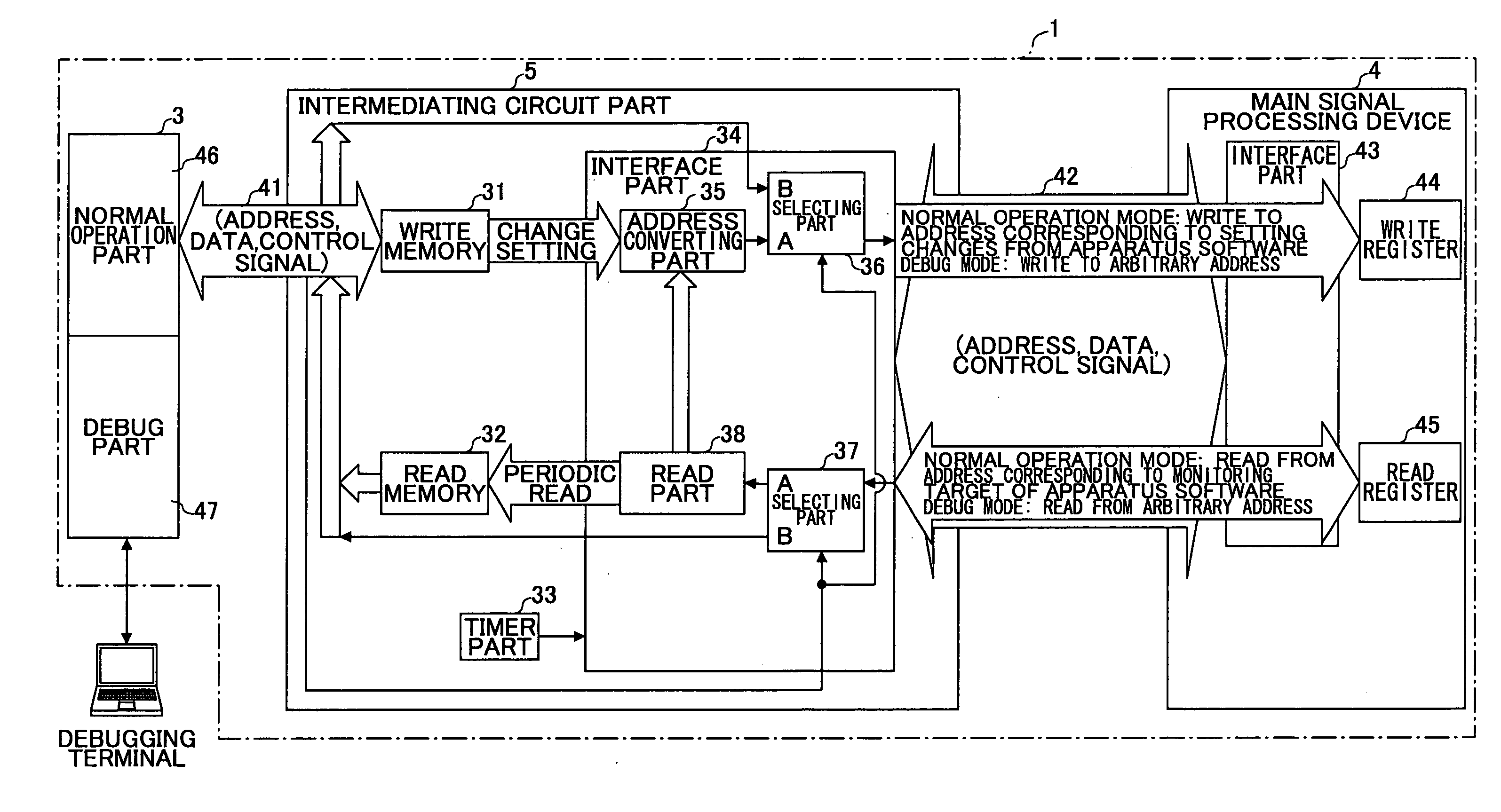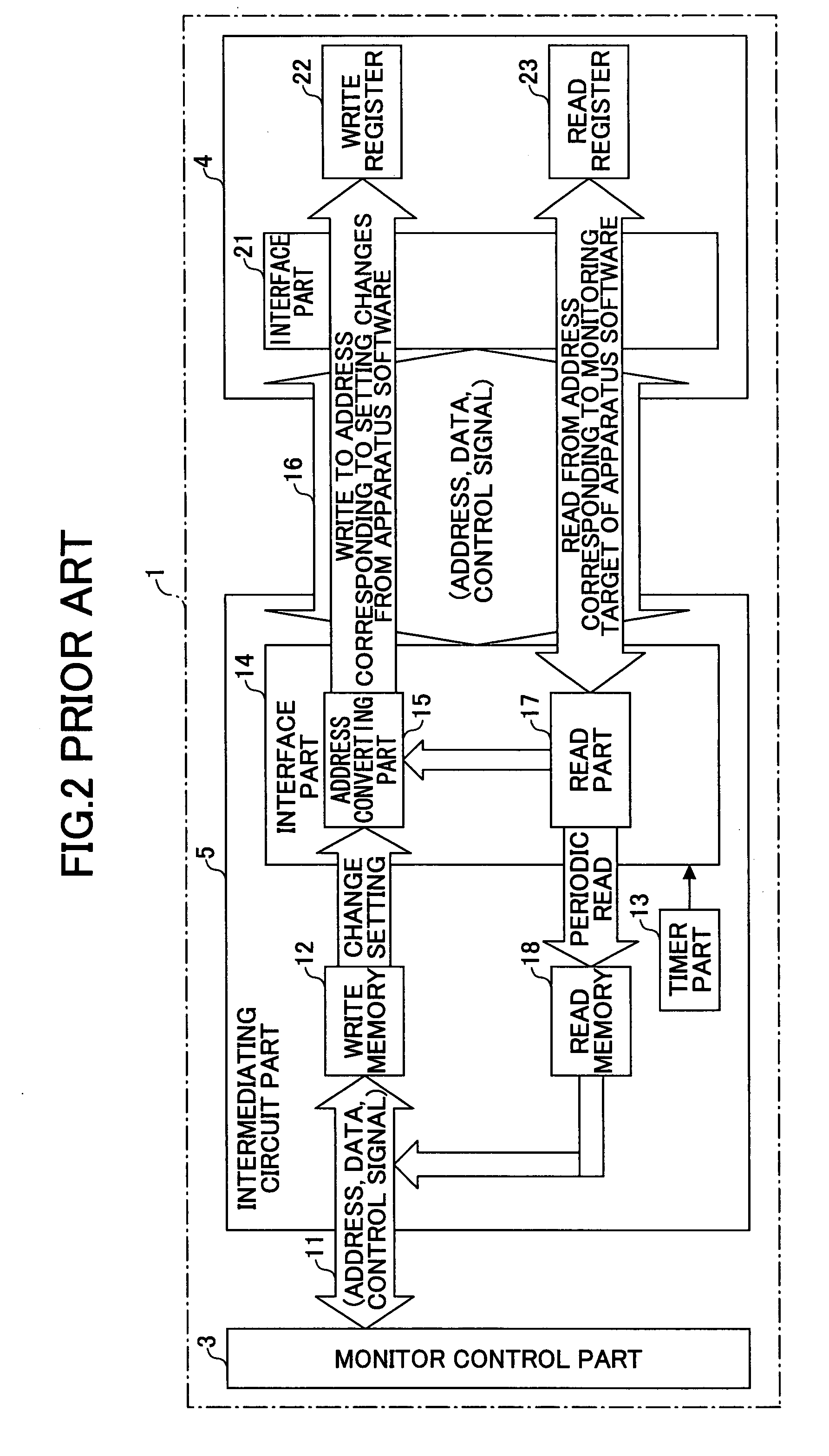Transmission apparatus
- Summary
- Abstract
- Description
- Claims
- Application Information
AI Technical Summary
Benefits of technology
Problems solved by technology
Method used
Image
Examples
Embodiment Construction
[0029]A description will be given of an embodiment of a transmission apparatus according to the present invention, by referring to FIGS. 4 and 5.
[Structure of the Present Invention]
[0030]FIG. 4 is a system block diagram showing this embodiment of the transmission apparatus according to the present invention. An optical transmission apparatus 1 shown in FIG. 4 has a monitor control part 3, a main signal processing device 4 and an intermediating circuit part 5. The intermediating circuit part 5 has a write memory 31, a read memory 32, a timer part 33, and an interface part 34. An address converting part 35, selecting parts 36 and 37, and a read part 38 are provided within the interface part 34.
[0031]On the other hand, an interface part 43, a write register 44, and a read register 34 are provided within the main signal processing device 4. The monitor control part 3 has a normal operation part 46 and a debug part 47.
[Normal Operation Mode]
[0032]In the normal operation mode, the set dat...
PUM
 Login to View More
Login to View More Abstract
Description
Claims
Application Information
 Login to View More
Login to View More - R&D
- Intellectual Property
- Life Sciences
- Materials
- Tech Scout
- Unparalleled Data Quality
- Higher Quality Content
- 60% Fewer Hallucinations
Browse by: Latest US Patents, China's latest patents, Technical Efficacy Thesaurus, Application Domain, Technology Topic, Popular Technical Reports.
© 2025 PatSnap. All rights reserved.Legal|Privacy policy|Modern Slavery Act Transparency Statement|Sitemap|About US| Contact US: help@patsnap.com



